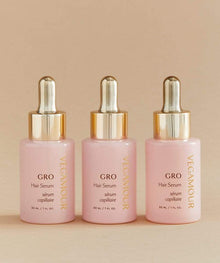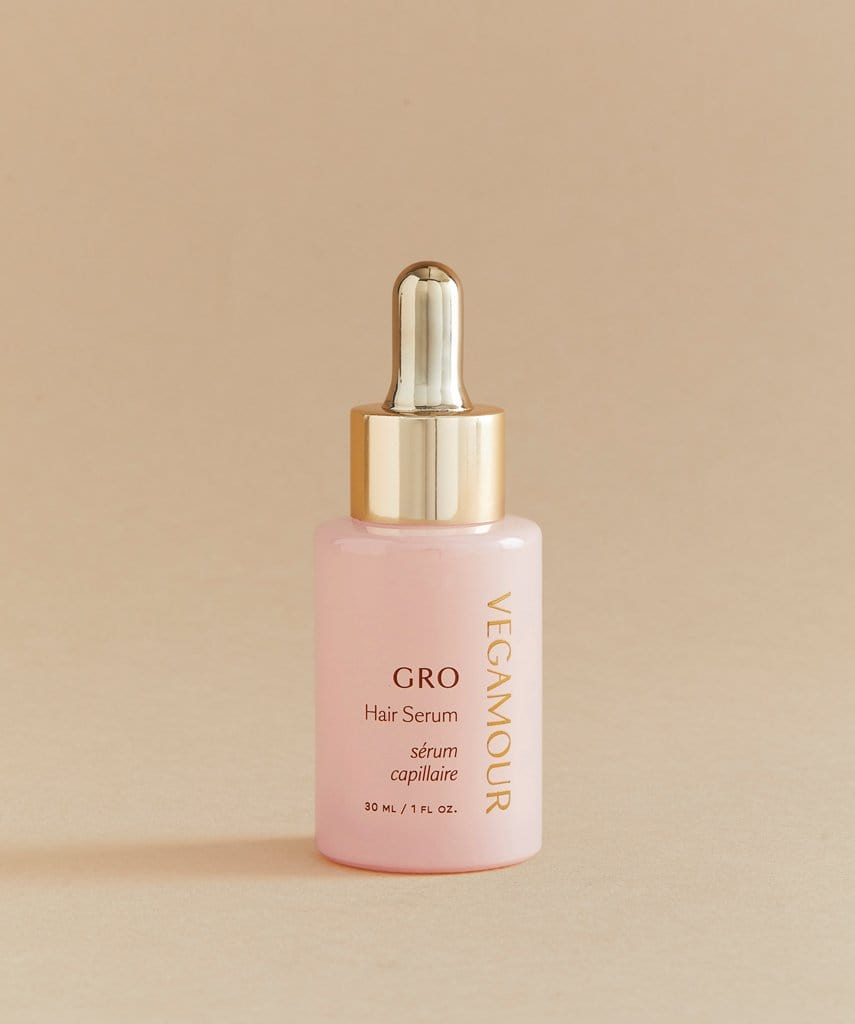What Is Trichotillomania? What to Know About Hair Pulling Disorder
Trichotillomania — also known as TTM or "trich" among the community — is a word that was coined centuries ago to describe a hair-pulling condition that is experienced by about 2% of people in their lifetimes. It is a multifaceted mental health condition that can be really challenging for those managing it.
Read on to get a better understanding of trichotillomania, along with how it's treated and what you can do to support a return to holistic hair wellness.
What Is Trichotillomania?
Trichotillomania is an impulse control disorder, which involves recurrent pulling out of one's own hair. The disorder is part of a family of behaviors called body-focused repetitive behaviors (BFRBs). Some people with trichotillomania also have other body-focused repetitive behaviors in addition to hair pulling, including skin picking, nail biting and lip chewing.
With TTM, people often first develop the condition during adolescence, when it typically happens equally among males and females. It can continue into adulthood and may come and go throughout life. In adulthood, trichotillomania is much more common among females.
“Those with trichotillomania have irresistible urges to pull out hair from their scalp, eyebrows and eyelashes and cannot control the impulse,” said Dr. Holly Schiff, a licensed clinical psychologist. The hair pulling can also vary greatly in its severity, triggers and response to treatment.
What Are the Symptoms of Trichotillomania?
Trichotillomania is a complex condition that can present differently in individuals.
In addition to the repeated pulling of hair, the main symptoms could include:
- Breaking off pieces of hair
- Eating hair, also called trichophagy
- A feeling of relief after pulling out hair
While hair pulling can happen anywhere on the body, most cases are concentrated on the scalp, followed by the eyebrows. For some, hair pulling can be mild enough that it won’t create visible bald spots, while for others, it can lead to noticeable bald spots and thinning patches.
Hair pulling can be triggered by or accompanied by different emotional states, like anxiety, boredom, stress or tension. The act of pulling can also provide a feeling of release, gratification or even pleasure.
“Oftentimes, people will start pulling for some reason, like a natural human grooming behavior, for example, and the tension from hair being yanked followed by relief creates a release of dopamine,” explained Dr. Max Maisel, a licensed clinical psychologist who specializes in OCD, anxiety and OCD-related disorders such as trichotillomania.
“As people begin to pull more due to this feeling of being gratified in some way, it can in some sense be like an addiction and become incredibly hard for people to stop,” he said. “Many people with TTM experience cycles of pulling throughout their lives."
The act of hair pulling can happen in two distinct ways: focused (also called automatic hair pulling) or unfocused. “With focused TTM, people often experience an overwhelming urge to pull hairs, and usually describe going into a trance-like state which is incredibly difficult to get out of,” explained Dr. Maisel.
Unfocused pulling happens when people are unaware of their actions. “For instance, somebody might be writing a report for work and picking their scalp without realizing it,” Dr. Maisel added. Some people will also experience “mixed hair pulling,” which includes episodes of both focused and unfocused pulling.
Shop: Tenley Molzahn's Top Vegamour Pick
How Severe Is Trichotillomania?
The severity of TTM also varies quite a lot. Some people might have mild cases that are easy to manage, but trichotillomania can also become severe and sometimes debilitating. Because people who are managing TTM often feel shame and embarrassment about their condition, many never seek treatment. The increased emotional and psychological strain can increase chances for a co-occurring disorder, and it can also place strain on relationships with family and friends.
“It wreaks havoc on your self-confidence,” Jennifer Deyo told VEGAMOUR. “I’ve turned down beach vacations, pool parties, swims with my daughter because I was afraid that someone, anyone, would see the real me." Jennifer is a mom, wife and writer residing in Franklin, Tennessee. Working through her own challenges with trichotillomania, she is also a mental health advocate who has come to speak out about TTM to help others.
Jennifer’s Hair Story: Living with Trichotillomania
What Causes Trichotillomania?
The exact cause of TTM is not known, but there is some evidence of genetic and environmental factors.
“While the exact cause isn’t known, age, genes and family history, stress and other mental health disorders can increase your risk of suffering from trichotillomania,” said Dr. Schiff.
According to Dr. Maisel, there are often underlying psychological predispositions that can put people at risk, such as difficulty tolerating distress, difficulty modulating concentration, a tendency to get "stuck" on thoughts and feelings, elevated impulsivity or urges to find relief from external sources.
Trichotillomania is more common among people with obsessive-compulsive disorder (OCD) and among people who have a close relative with TTM or OCD. According to the American Psychiatric Association, OCD also affects about 2%-3% of people in the United States and is more common in women.
“TTM is also highly related to other OCD-related concerns such as body dysmorphic disorder, anxiety disorders, and attention deficit/hyperactivity disorder (ADHD),” said Dr. Maisel.
Many people with TTM report that pulling is often induced by triggers like emotional distress, tension or even boredom. The relief that trichotillomania hair pulling provides creates a cycle of behavior that reinforces the recurrent pulling — it becomes a coping mechanism — which is why it can be so hard to stop.
Hair Story: How I'm Healing From Trichotillomania
How Is Trichotillomania Diagnosed?
If you or someone you love is struggling with hair pulling, seek support from a doctor or psychologist.
A diagnosis of trichotillomania is usually made if the patient is:
- Removing hair from one or more regions of the body
- Having trouble stopping the hair-pulling behavior
- Experiencing a lot of distress or impairment in at least one area of functioning
- Not experiencing hair loss due to a medical condition
- Not diagnosed with another mental health condition that could better explain the hair pulling
A “differential diagnosis” approach is usually taken with TTM in order to rule out other underlying causes of hair loss, like medications, medical conditions or other mental health conditions.
How Is Trichotillomania Treated?
Some people with TTM may need the help of several different doctors, like a dermatologist, a psychiatrist and a licensed clinical psychologist. Trichotillomania treatment will most often include behavioral therapy, like cognitive behavior therapy, and might also include medication.
Since it's a complex condition, treating trichotillomania often takes time and practice. It might take some trial and effort to find the approaches that work best for you, and don’t be discouraged if symptoms come and go repeatedly.
“These treatments help people gain insight into both internal and external factors related to their pulling, and then offer strategies and tools to increase their awareness and navigate the hair-pulling urges related to pulling in new ways,” said Dr. Maisel.
Habit reversal training is a common therapy to reduce hair pulling. “It also teaches the patient how to recognize situations where they are likely to pull their hair in addition to substituting another behavior,” explained Dr. Schiff.
Evidence suggests that the earlier the treatment of trichotillomania is sought out, the better. The hair loss caused by TTM can generally be reversed over time when pulling stops, but it does cause skin and hair damage. Additionally, if pulling goes on in the same areas over a long period, the hair follicles might not recover, resulting in permanent hair loss.
“It’s important to note that it's never helpful to tell somebody with TTM to "stop hair pulling" because they can't; it’s not that simple,” said Dr. Maisel. “It’s equally important that people with TTM know that there are evidence-based approaches out there to learn ways to get pulling under control and even stop completely in many cases."
Shop: GRO Collection for Thinning Hair
Managing Hair Loss From Trichotillomania
The hair loss that comes along with TTM can be a source of a lot of shame, significant distress, embarrassment and anxiety, so it’s important to treat yourself or a loved one managing TTM with a lot of compassion and support.
Taking a holistic approach to managing any noticeable hair loss associated with TTM will help support the body and mind, both of which need to be tended during treatment and can help restore hair growth.
Self-Care That Can Soothe Stress
Stress is hard to manage at the best of times, but with effort, it's possible. Consider forest bathing, spending time with pets or watching a funny movie — all of which are natural, soothing and enjoyable ways to lower cortisol.
More Zen Please: 9 Natural Ways to Lower Cortisol
Be Kind to Your Follicles
Since pulling hair repetitively puts stress on your follicles, be extra gentle when caring for your scalp while your hair grows back in. Try to avoid scalp stressors like tight hairstyles, heat styling and synthetic ingredients.
Also, consider a serum like GRO+ Advanced Hair Serum, which is infused with powerful hemp and vegan phyto-actives that can help up your hair care game by encouraging fuller, thicker-looking hair in just three months.
Seek Out Support
The support of others who are also managing TTM can be invaluable. “About a year ago, I stopped hiding and shared my struggle publicly on Facebook and Instagram,” Dayo said. “It was a nerve-racking experience, but then messages flooded in.”
Jennifer learned that even friends in her own circle were managing trichotillomania. “It made me realize something necessary for recovery: I AM NOT ALONE. And neither are you,” she said. Now, Jennifer works as an advocate, sharing resources on the Trich Tricks website and Instagram account.
The TLC Foundation for Body-Focused Repetitive Behaviors (formerly known as the Trichotillomania Learning Center) also offers lots of educational support and many other resources for people with TTM, along with their loved ones and anyone who wants to get involved with support or advocacy.
The Takeaway
Trichotillomania is a complex and multifaceted mental health disorder that is characterized by repetitive hair pulling. It can be a very challenging condition for those managing it, and many don’t seek out treatment because of embarrassment and shame. With the support of family and friends along with cognitive therapy, those with TTM can learn to recognize their triggers and substitute different behaviors for hair pulling. If you think you might have trichotillomania, see a doctor for help with diagnosis and treatment.
More from VEGAMOUR
- Why Millions Choose GRO Hair Serum
- What Your Hair Can Tell You About Your Overall Health
- How to Regain Hair Loss From Stress
- These Celebrities Have Gotten Real About Hair Loss
Photo credit: Mikhail Nilov/Pexels















